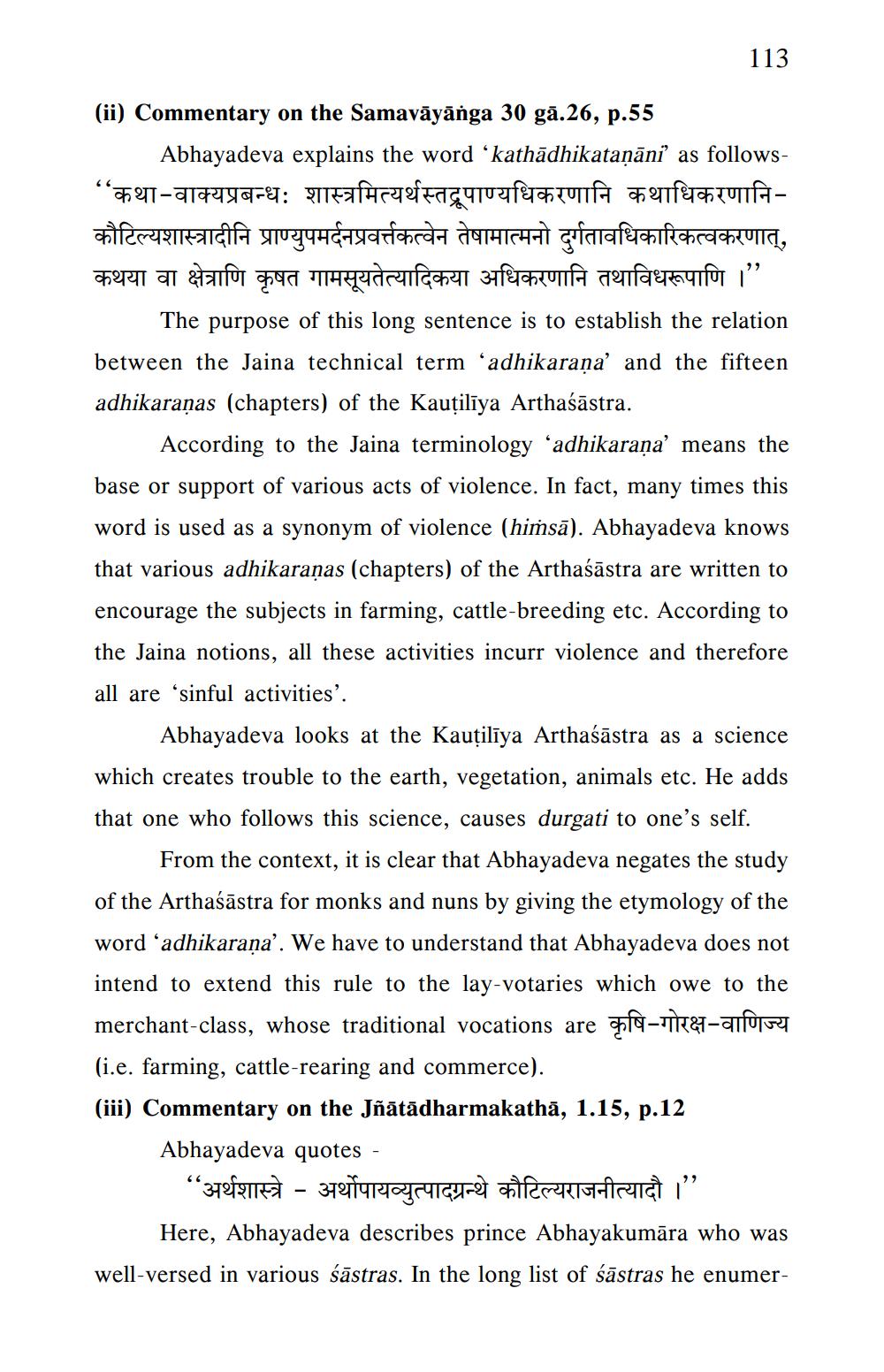________________
113
(ii) Commentary on the Samavāyānga 30 gā.26, p.55
Abhayadeva explains the word 'kathādhikataṇāni” as follows'कथा - वाक्यप्रबन्धः शास्त्रमित्यर्थस्तद्रूपाण्यधिकरणानि कथाधिकरणानि - कौटिल्यशास्त्रादीनि प्राण्युपमर्दनप्रवर्त्तकत्वेन तेषामात्मनो दुर्गतावधिकारिकत्वकरणात्, कथया वा क्षेत्राणि कृषत गामसूयतेत्यादिकया अधिकरणानि तथाविधरूपाणि ।”
The purpose of this long sentence is to establish the relation between the Jaina technical term 'adhikarana' and the fifteen adhikaranas (chapters) of the Kauṭilīya Arthaśāstra.
According to the Jaina terminology ‘adhikaraṇa' means the base or support of various acts of violence. In fact, many times this word is used as a synonym of violence (himsā). Abhayadeva knows that various adhikaranas (chapters) of the Arthaśāstra are written to encourage the subjects in farming, cattle-breeding etc. According to the Jaina notions, all these activities incurr violence and therefore all are 'sinful activities'.
Abhayadeva looks at the Kauțiliya Arthaśāstra as a science which creates trouble to the earth, vegetation, animals etc. He adds that one who follows this science, causes durgati to one's self.
From the context, it is clear that Abhayadeva negates the study of the Arthaśāstra for monks and nuns by giving the etymology of the word 'adhikarana'. We have to understand that Abhayadeva does not intend to extend this rule to the lay-votaries which owe to the merchant-class, whose traditional vocations are कृषि - गोरक्ष-वाणिज्य (i.e. farming, cattle-rearing and commerce).
(iii) Commentary on the Jñātādharmakathā, 1.15, p.12
Abhayadeva quotes
“अर्थशास्त्रे - अर्थोपायव्युत्पादग्रन्थे कौटिल्यराजनीत्यादौ ।”
Here, Abhayadeva describes prince Abhayakumāra who was well-versed in various sastras. In the long list of sastras he enumer




